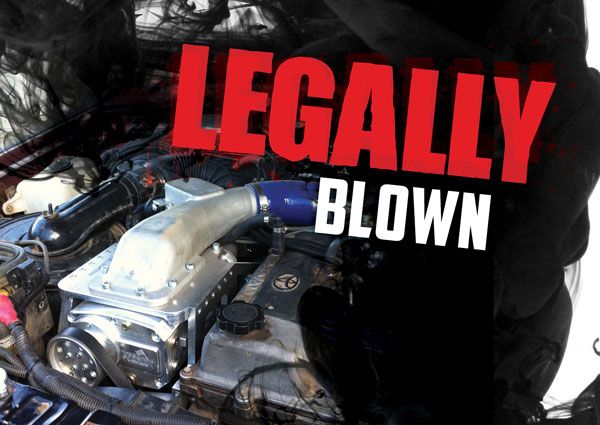Everybody wants a supercharger, right? Here’s how to fit one while keeping things 100% legal.
Performance modifications tread a fine line, and much debate rages as to tyre sizes, suspension mods, and even driving lights. So when the idea was floated to fit a twin-screw blower to an early ’90s designed engine, the question was asked, “How can that possibly be legal?” Well it wasn’t easy… but it is possible!
The first decision is what to use and why. We went with a Sprintex unit, that’s designed and made in Perth, WA. The quality of this system is excellent, but even so fitment took around 20 hours on the tools – there is a lot involved. But it’s SO worth it.
The Vehicle
The subject for our modification was a 1997 Toyota LandCruiser FZJ80R with a 4.5L petrol straight-six and auto trans. This combination is best known for its plentiful lowdown torque and ability to drain a servo of fuel in one gulp. The 80-Series is regarded as one of the best 4WDs produced by Toyota and is still popular as a tourer; it just needs a bit more go (don’t they all?).
Now let’s call a spade a spade here, you don’t buy a petrol 80 for fuel economy – so forget worrying about it. Standard performance is good; but more is better, right? With V8 petrol or diesel conversion costs skyrocketing, the supercharging option made sense. Given the top end power was already pretty good, the plan was to keep heat down and driveability up. So the choice was to install a supercharger over a turbo. They develop bucketloads of lowdown torque while retaining top end power.
The Modifications
The Sprintex supercharger fits neatly to the side of the engine block in the LandCruiser. The intake system is easily replaced with new manifold sections and two extra injectors at the cross-over pipe, but installing the drive pulley at the crank required an extensive vocabulary of four-letter words.
Before dusting off the Sidchromes, check with your local authorities and attain a ‘Statement of Requirements’. This is essential, as it’s your ticket to success if you want to do this legally. This project was done over ‘some time’ so from experience it’s best not to let things sit. Get it done as quick as you can.
The first step with this installation, as much as it hurts, is to read the instructions. Even if it’s being fitted for you, get to know the system and elements – as service will be required down the track. This upgrade also included new performance leads and plugs, exhaust headers and 2.5in system, improved filtration, and a Dyno tune – an essential part of the forced induction process. Crucial to passing the emissions test is a catalytic converter, as it simply will not get through without one. We used an FG Falcon XR6 Turbo cat, about the size of a keg, and shoved it up as close to the engine as possible. Keep in mind these will get extremely hot. Wiring in control over this vehicle’s two-stage fuel pump meant the fuel mixture under load and deceleration could be managed better.
Testing
The IM240 drive cycle test covers about 2km total distance on the Dyno. Levels of hydrocarbons, carbon monoxide and nitrous oxides are recorded. This requires an understanding of fuel delivery, air to fuel ratios, tune, and the ability of the ‘tester’ to follow the worm through a series of accelerations, holds, and decelerations. Testing required varying the advance of the engine distributor, adjusting fuel flow and pressures, and fuel volume adjustments. Don’t expect a pass first time, or the second or third. Persistence and understanding the balances required is vital; so get to know your tester.
Adelaide Performance Engineers has a strong record in Dyno tuning and it’s a very professional operation. The team went above and beyond the call of duty and persisted with varying states of tune in order to achieve the desired results. In the end it’s all about averages, and that’s what got us across the line. Find yourself a similarly-minded crew and it will be a much smoother experience.
The final stage is where the transport department inspectors will check every component and operation of the vehicle – so hearing the ‘thump’ of that ‘Passed’ stamp may threaten to cause the top of your head to crack off from grinning so hard. Fitting a supercharger potentially means no more sweaty palms at the sight of an RBT. Do it right and you can calmly say, “Nah, thanks mate, already blown!”
This article was originally posted by Unsealed 4X4.


